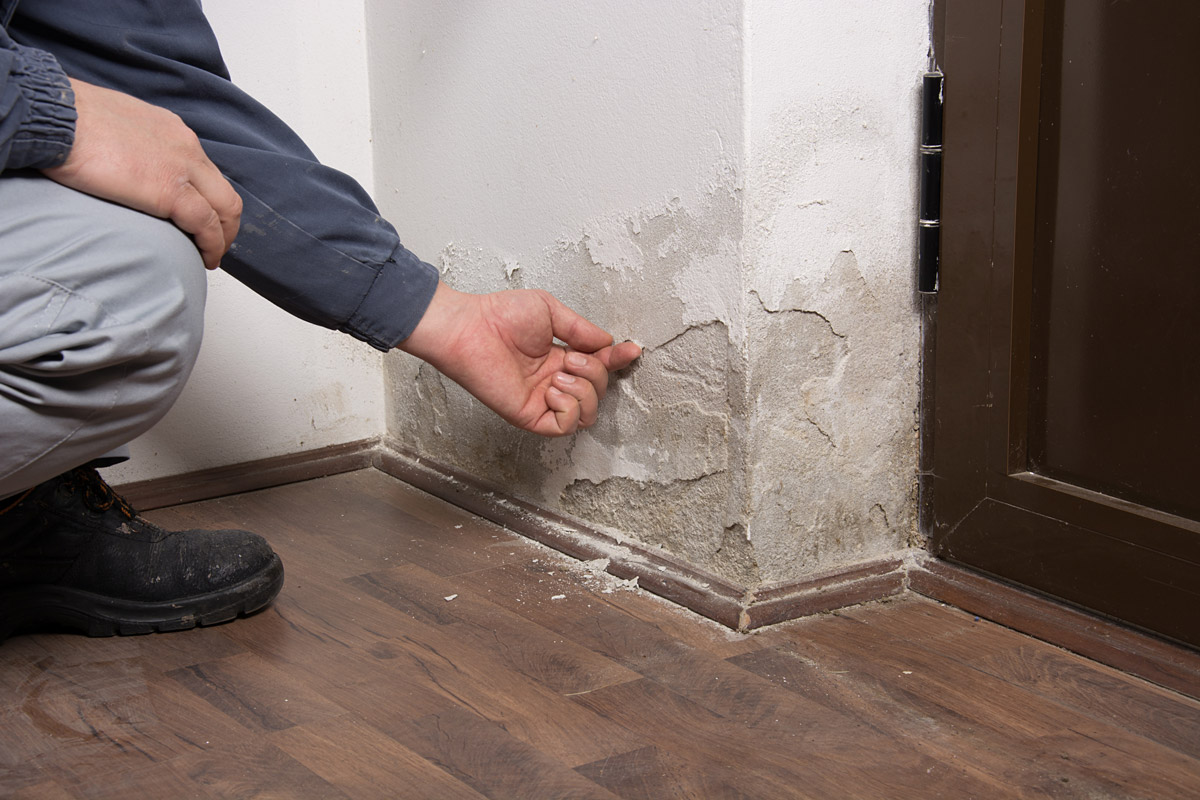Older, or heritage, buildings are so much more than bricks and mortar. They are architectural gems; they connect us to our past and deserve to be looked after. These custodians of our collective memory and witnesses to bygone eras are a key part of our cultural heritage. To preserve them is to protect our history and identity.
For these buildings, damp can be a formidable enemy, penetrating walls, seeping into foundations and hiding in all sorts of nooks and crannies, silently inflicting devastating damage. Where damp is present, wood begins to rot, masonry begins to deteriorate and mould thrives – and these are just some of the threats facing our architectural treasures.
Managing damp in older buildings poses unique challenges. How do we preserve structural integrity while controlling humidity? How do we reconcile architectural restoration with energy efficiency? In this article, we seek to explore these challenges and present a variety of ways to overcome them.
The challenges of preserving older buildings
In the first part of the article, we’ll take a close look at why it’s so important to preserve old buildings. We need to understand why it’s so important to cherish these reminders of our past and safeguard them for future generations.
Cultural and historical heritage
When we think of heritage buildings, we think primarily of their architectural beauty. Older buildings exude a timeless elegance and charm, reflecting the architectural skills and craftsmanship of the time. Styles are rich and varied, from majestic Gothic to classic Renaissance – a history lesson on every street! And as we’ve said, they’re not just bricks and mortar. They carry within them a reminder of our culture, our history and our roots. Every wall, courtyard and stained-glass window has a story to tell, about our society and traditions, and the changes they’ve seen over the ages.
Sustainable and planet-friendly
Building conservation is a perfect example of sustainability: it reduces the amount of waste produced by the construction industry, and thereby saves precious resources. Instead of knocking down an old structure and building something new, we re-use and preserve what we have. New-builds require a considerable amount of energy, while conserving older buildings minimises energy requirements, helping to reduce our carbon footprint.
Supporting the local economy
Heritage buildings attract visitors from all over the globe. Cultural tourism is becoming hugely popular, and historic monuments are fast becoming a favourite destination. This stimulates the local economy by attracting tourists and generating revenue for neighbouring communities. The conservation work involved also creates a range of jobs locally, from specialist craftsmen to conservation experts, strengthening the economic fabric of the communities in which these buildings are located.
So preserving historic buildings is not simply a boost for the construction trade. It also supports our culture, the environment and the local economy. In the next section, we’ll focus on how we can keep damp at bay in these historic treasures.
Combating damp in older buildings
Welcome to the second part of our exploration into managing damp in older buildings. Now that we’ve understood why it’s so important to preserve our historic buildings, let’s take a look at how damp may affect their resilience.
Where does damp come from?
In older buildings, rain can be a friend or a foe, depending on how watertight they are. Rain ingress is one of the main causes of damp, and can be caused by roof damage, blocked gutters or deteriorating mortar. In all cases, water may seep in slowly but persistently.
Rising damp is another natural phenomenon, whereby moisture from the ground travels through building materials by capillary action. In older buildings – whose foundations are often porous – this can lead to untold damage in walls and floors.
Condensation can be another result of excess moisture, and occurs when warm, moist air comes into contact with colder surfaces to form droplets of water. Poorly insulated windows can often be the cause.
Risks to structure
Excess moisture can wreak havoc on construction materials. Wood rots, brickwork deteriorates and masonry loses its strength, all compromising the structural integrity of the building. Damp foundations can become unstable, jeopardising the stability of the whole structure: walls may crack and floors may bow, creating a safety risk for the building’s occupants.
Other possible safety issues include sagging ceilings and problems with electrics. Taking care of older buildings also means safeguarding those who live in them or visit them.
Risks to the health and comfort of occupants
Excessive damp encourages the growth of mould, which can have harmful effects on human health. Airborne mould spores can trigger allergies, respiratory problems and a host of other health complaints.
Occupants of older buildings with a damp problem run the risk of developing allergies, asthma and other respiratory ailments. Air quality inside the building is a major factor in ensuring both comfort and health.
In the next section, we’ll explore different ways to combat damp and the associated problems.
Solutions for managing damp in older buildings
Diagnosing damp: Assessing the condition of the building
The first step towards solving damp problems in an older building is to carry out a thorough analysis. The importance of this step cannot be underestimated: it’s the basis for finding the most effective solution. An in-depth analysis involves careful examination of the walls, ceilings and foundations, and also checking the interior for evidence of damp. Damp patches, mould, cracks and damaged plaster are tell-tale signs.
Assessing existing levels of damp
Once the symptoms have been identified, it’s essential to measure how much moisture there is in the building. There are various devices available to do this; they will help determine the severity of the problem, putting you in a better position to choose the right solution.
Respecting the building’s heritage character
When dealing with damp in an older structure, it’s important to respect the building’s historic character, using the appropriate traditional techniques and materials when repairing façades and roofs. This retains architectural integrity.
Damp management techniques
There are a number of ways to tackle damp in older buildings. Proper ventilation is vital to allow air to circulate and excess moisture to escape. Dehumidifiers can be useful in reducing ambient humidity, while thermal insulation can play a big part in maintaining a healthy indoor environment.
Finally, there’s a revolutionary technique known as polarity inversion, delivered by the Electromagnetic Polarity Inverter (I.P.E®) and the Geomagnetic Polarity Inverter (I.P.G®). Polarity inverters are unique in their approach to managing excess humidity and rising damp: unlike other methods, they don’t just mask the problem, but tackle and eliminate it at source. By creating an electromagnetic barrier, they preserve the integrity of the building without the need for major renovation work.
Compliance with standards and regulations
When tackling damp in older buildings, it’s important to be aware of any special rules or protocols that apply to buildings of historic or architectural interest, and to bear in mind local requirements. There may be specific regulations in place, depending on region and the type of structure being treated. Make sure you familiarise yourself with them – it may help avoid a legal battle later on!
To sum up: In this article, we’ve explored ways to manage damp in older buildings, highlighting the essential steps needed to preserve these architectural and historic treasures. Damp can be a silent enemy, compromising the structural integrity and beauty of our heritage buildings. However, with the right approach, we can stop it in its tracks.
The importance of managing damp to safeguard older buildings
The importance of damp management cannot be overstated: it plays a crucial role in the conservation of our architectural heritage. By controlling damp, we can prevent damage from rot, mould and decay, all of which mar the character of these unique buildings, whose beauty and history are priceless to us as a society. It’s our responsibility to preserve them for future generations.
The conservation of older buildings requires close cooperation between heritage experts, skilled craftsmen, local communities and government bodies. By working together, we can develop effective strategies to tackle damp while retaining architectural integrity, ensuring a sustainable future for these magnificent structures.
It’s an exciting challenge, which requires both expertise and commitment. But by following the steps we’ve outlined, we can continue to enjoy the splendour of our architectural gems for years to come.





